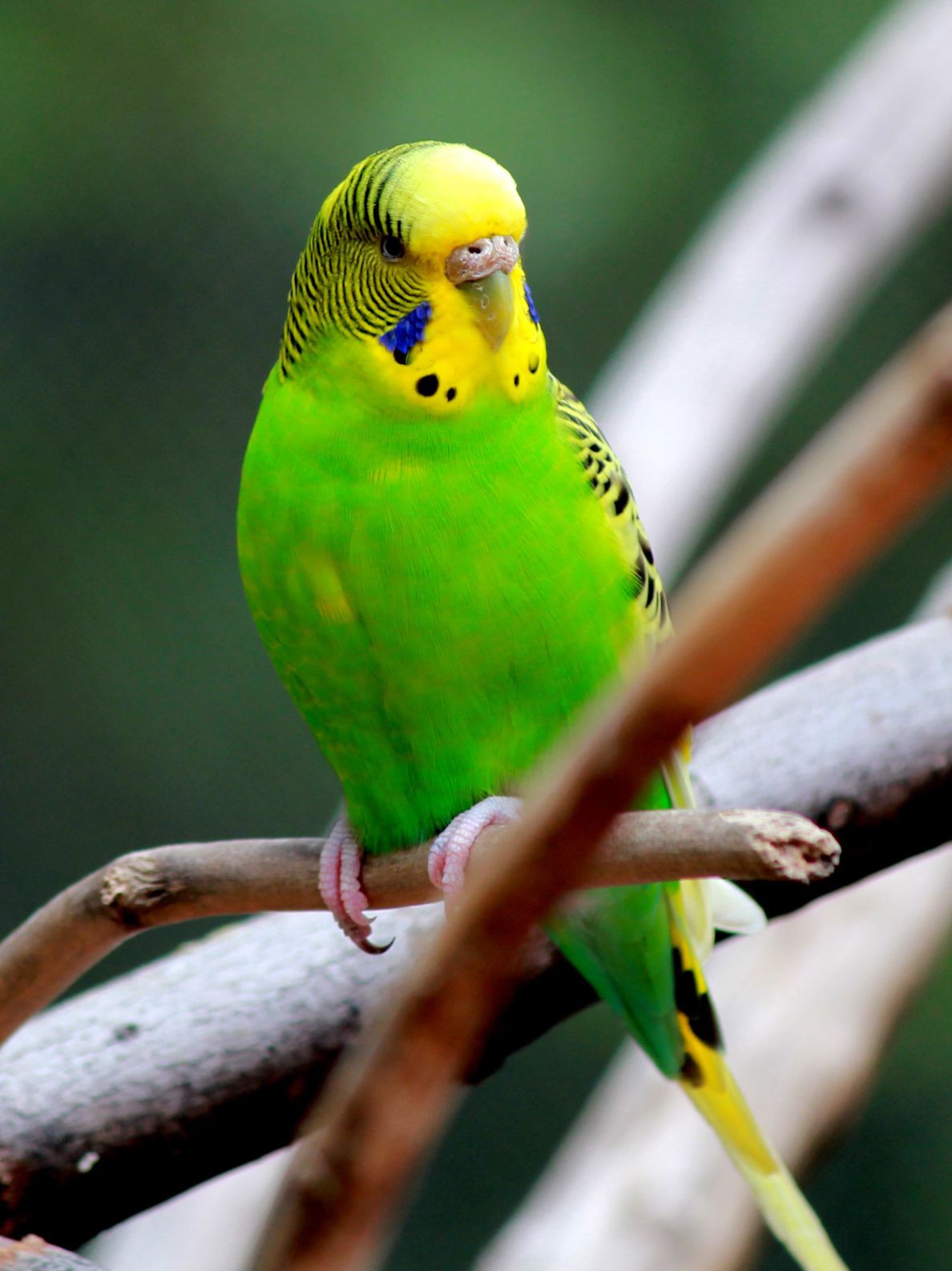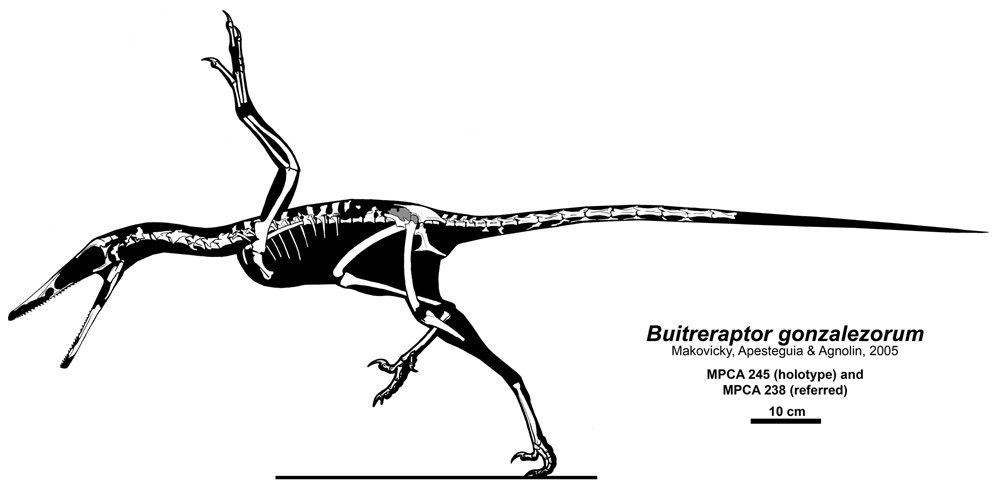|
Overoraptor
''Overoraptor'' (meaning "piebald thief") is a genus of paravian theropod dinosaurs, which was closely related to ''Rahonavis'', from the Late Cretaceous (Cenomanian) Huincul Formation of Gondwana, present-day Argentina. It includes one species, ''Overoraptor chimentoi''. Etymology The generic name ''Overoraptor'' is derived from the Spanish ''overo'', meaning piebald, in reference to the color of the fossil bones. The specific name, ''O. chimentoi'', refers to Roberto Nicolás Chimento, who discovered the remains. Description and classification Although the holotype is very fragmentary, it exhibits an unusual combination of features that reveal a novel phylogenetic position. The forelimb exhibits a bird-like morphology that includes, among other things, a robust ulna, while the hindlimb appears to have been adapted for a cursorial lifestyle. A "sickle-claw" similar to that of dromaeosaurs is also present. Both a flight-adapted forelimb and a cursorial hindlimb are present i ... [...More Info...] [...Related Items...] OR: [Wikipedia] [Google] [Baidu] |
Unenlagiidae
Unenlagiidae is a proposed family of eumaniraptoran paravians that includes the subfamilies Unenlagiinae and possibly Halszkaraptorinae. Fossils of both subfamilies have been found in both Gondwanan and Laurasian deposits. The biology of the group suggests that some members were semiaquatic specialists. Classification The family Unenlagiidae traditionally includes the same members as the previously named subfamily of Dromaeosauridae, Unenlagiinae, so Unenlagiidae was often seen as a synonym of Dromaeosauridae. However, since the 2010s, there have been subsequent studies that have questioned this placement, necessitating the revival of the family name. Some have placed unenlagiids as outside Dromaeosauridae, being the sister taxon or closely related to Avialae, while others have placed the newly recognized halszkaraptorines in the family, as basal deinonychosaurs outside Dromaeosauridae and Troodontidae Troodontidae is a clade of bird-like theropod dinosaurs. During most o ... [...More Info...] [...Related Items...] OR: [Wikipedia] [Google] [Baidu] |
Unenlagia
''Unenlagia'' (meaning "half-bird" in Latinized Mapudungun) is a genus of dromaeosaurid theropod dinosaur that lived in South America during the Late Cretaceous period. The genus ''Unenlagia'' has been assigned two species: ''U. comahuensis'', the Type (biology), type species described by Novas and Puerta in 1997, and ''U. paynemili'', described by Calvo ''et al.'' in 2004. Discovery and naming In 1996 in the Neuquén province of Argentina a skeleton of a theropod was discovered in the Sierra del Portezuelo and reported the same year. In 1997 Fernando Emilio Novas and Pablo Puerta named and described ''Unenlagia comahuensis''. The generic name is derived from Mapuche ''uñùm'', 'bird', and ''llag'', 'half', in reference to the fact that the describers considered the species to be a link between birds and more basal theropods. The specific name (zoology), specific name refers to the Comahue, the region the find was made. The holotype specimen, MCF PVPH 78, was uncovered in lay ... [...More Info...] [...Related Items...] OR: [Wikipedia] [Google] [Baidu] |
Averaptora
Paraves are a widespread group of theropod dinosaurs that originated in the Middle Jurassic period. In addition to the extinct dromaeosaurids, troodontids, anchiornithids, and possibly the scansoriopterygids, the group also contains the avialans, among which are the over ten thousand species of living birds. Early members of Paraves are well known for the possession of an enlarged claw on the second digit of the foot, which was held off the ground when walking in some species. Description Like other theropods, all paravians are bipedal, walking on their two hind legs. The teeth of primitive paravians were curved and serrated, but not blade-like except in some specialized species such as ''Dromaeosaurus albertensis''. The serrations on the front edge of dromaeosaurid and troodontid teeth were very small and fine, while the back edge had serrations which were very large and hooked. Most of the earliest paravian groups were carnivorous, though some smaller species (especially am ... [...More Info...] [...Related Items...] OR: [Wikipedia] [Google] [Baidu] |
Paraves
Paraves are a widespread group of theropod dinosaurs that originated in the Middle Jurassic period. In addition to the extinct dromaeosaurids, troodontids, anchiornithids, and possibly the scansoriopterygids, the group also contains the avialans, among which are the over ten thousand species of living birds. Early members of Paraves are well known for the possession of an enlarged claw on the second digit of the foot, which was held off the ground when walking in some species. Description Like other theropods, all paravians are bipedal, walking on their two hind legs. The teeth of primitive paravians were curved and serrated, but not blade-like except in some specialized species such as ''Dromaeosaurus albertensis''. The serrations on the front edge of dromaeosaurid and troodontid teeth were very small and fine, while the back edge had serrations which were very large and hooked. Most of the earliest paravian groups were carnivorous, though some smaller species (especially a ... [...More Info...] [...Related Items...] OR: [Wikipedia] [Google] [Baidu] |
Rahonavis
''Rahonavis'' is a genus of bird-like theropods from the Late Cretaceous (Maastrichtian, about 70 mya) of what is now northwestern Madagascar. It is known from a partial skeleton ( UA 8656) found by Catherine Forster and colleagues in Maevarano Formation rocks at a quarry near Berivotra, Mahajanga Province.Tudge, Colin (2009) ''The Bird:A Natural History of Who Birds Are, Where They Came From, and How They Live'/ref> ''Rahonavis'' was a small predator, at about long and 0.45-2.27 kg (1-5 lbs),Holtz, Thomas R. Jr. (2008) ''Dinosaurs: The Most Complete, Up-to-Date Encyclopedia for Dinosaur Lovers of All Ages'Supplementary Information/ref> with the typical ''Velociraptor''-like raised sickle claw on the second toe. It was originally the first African coelurosaur until the Nqwebasaurus was discovered in 2000. The name ''Rahonavis'' means, approximately, "cloud menace bird", from Malagasy ' (RA-hoo-na, "cloud" or "menace") + Latin ' "bird". The specific name, ''R. ostromi'', was co ... [...More Info...] [...Related Items...] OR: [Wikipedia] [Google] [Baidu] |
Huincul Formation
The Huincul Formation is a geologic formation of Late Cretaceous ( Early Cenomanian to Late Turonian) age of the Neuquén Basin that outcrops in the Mendoza, Río Negro and Neuquén Provinces of northern Patagonia, Argentina.Huincul Formation at .org It is the second formation in the Río Limay Subgroup, the oldest subgroup within the . Formerly that subgroup was treate ... [...More Info...] [...Related Items...] OR: [Wikipedia] [Google] [Baidu] |
Eumaniraptora
Paraves are a widespread group of theropod dinosaurs that originated in the Middle Jurassic period. In addition to the extinct dromaeosaurids, troodontids, anchiornithids, and possibly the scansoriopterygids, the group also contains the avialans, among which are the over ten thousand species of living birds. Early members of Paraves are well known for the possession of an enlarged claw on the second digit of the foot, which was held off the ground when walking in some species. Description Like other theropods, all paravians are bipedal, walking on their two hind legs. The teeth of primitive paravians were curved and serrated, but not blade-like except in some specialized species such as ''Dromaeosaurus albertensis''. The serrations on the front edge of dromaeosaurid and troodontid teeth were very small and fine, while the back edge had serrations which were very large and hooked. Most of the earliest paravian groups were carnivorous, though some smaller species (especially am ... [...More Info...] [...Related Items...] OR: [Wikipedia] [Google] [Baidu] |
Microraptoria
Microraptoria (Greek, μίκρος, ''mīkros'': "small"; Latin, ''raptor'': "one who seizes") is a clade of basal dromaeosaurid theropod dinosaurs. The first microraptorians appeared 125 million years ago in China. Many are known for long feathers on their legs and may have been semiarboreal powered fliers, some of which were even capable of launching from the ground.. Most microraptorians were relatively small; adult specimens of ''Microraptor'' range between ) and weigh up to , making them some of the smallest known nonavialan dinosaurs.Holtz, Thomas R. Jr. (2011) ''Dinosaurs: The Most Complete, Up-to-Date Encyclopedia for Dinosaur Lovers of All Ages,'Winter 2010 Appendix./ref> Description Microraptorians were a group of basal dromaeosaurids (popularly known as "raptors") with slender proportions and long limbs. With the exception of ''Hesperonychus'' from the late Cretaceous of North America, all microraptorians have been found in the Yixian and Jifuotang Formations of Liao ... [...More Info...] [...Related Items...] OR: [Wikipedia] [Google] [Baidu] |
Austroraptor
''Austroraptor'' ( ) is a genus of large dromaeosaurid dinosaur that lived during the Late Cretaceous Period in what is now Argentina. ''Austroraptor'' was a large-sized, moderately-built, ground-dwelling, bipedal carnivore, estimated at in length. It is one of the largest dromaeosaurids known, with only ''Achillobator'', ''Dakotaraptor'', and ''Utahraptor'' approaching or surpassing it in length. Discovery and naming The type specimen of ''Austroraptor cabazai'', holotype MML-195, was recovered in the Bajo de Santa Rosa locality of the Allen Formation, in Río Negro, Argentina. The specimen was collected in 2002 by the team of Fernando Emilio Novas of the '' Museo Argentino de Ciencias Naturales''. It consists of a fragmentary skeleton including parts of the skull, lower jaw, a few neck and torso vertebrae, some ribs, a humerus, and assorted bones from both legs. The specimen was prepared by Marcelo Pablo Isasi and Santiago Reuil. In 2008, the type species ''Austroraptor cab ... [...More Info...] [...Related Items...] OR: [Wikipedia] [Google] [Baidu] |
Buitreraptor
''Buitreraptor'' (meaning "La Buitrera seizer") is a genus of dromaeosaurid dinosaurs that lived during the Late Cretaceous of Argentina at the Candeleros Formation. ''Buitreraptor'' was described in 2005 and the type species is ''Buitreraptor gonzalezorum''. It was rooster-sized and had a very elongated head with many small teeth. History of discovery Four specimens of ''Buitreraptor'' were found in 2004 in sandstone in Patagonia, Argentina during an excavation led by Sebastián Apesteguia, researcher of CONICET at the Fundacion Felix de Azara - Maimonides University, and Peter Makovicky, curator of dinosaurs at the Field Museum in Chicago. ''Buitreraptor'' is from the early Late Cretaceous Candeleros Formation, dating to the Cenomanian-Turonian ages approximately 98 to 97 million years ago, when South America was an isolated continent like Australia today. It was uncovered in a famous fossil site named ''La Buitrera'', the "vulture roost". Although dinosaurs are rare in thi ... [...More Info...] [...Related Items...] OR: [Wikipedia] [Google] [Baidu] |
Late Cretaceous
The Late Cretaceous (100.5–66 Ma) is the younger of two epochs into which the Cretaceous Period is divided in the geologic time scale. Rock strata from this epoch form the Upper Cretaceous Series. The Cretaceous is named after ''creta'', the Latin word for the white limestone known as chalk. The chalk of northern France and the white cliffs of south-eastern England date from the Cretaceous Period. Climate During the Late Cretaceous, the climate was warmer than present, although throughout the period a cooling trend is evident. The tropics became restricted to equatorial regions and northern latitudes experienced markedly more seasonal climatic conditions. Geography Due to plate tectonics, the Americas were gradually moving westward, causing the Atlantic Ocean to expand. The Western Interior Seaway divided North America into eastern and western halves; Appalachia and Laramidia. India maintained a northward course towards Asia. In the Southern Hemisphere, Australia and Ant ... [...More Info...] [...Related Items...] OR: [Wikipedia] [Google] [Baidu] |
Archaeopterygidae
Archaeopterygidae is a group of maniraptoran dinosaurs, known from the latest Jurassic and earliest Cretaceous of Europe. In most current classifications, it contains only the genera ''Archaeopteryx'' and ''Wellnhoferia''. As its name suggests, ''Protarchaeopteryx'' was also once referred to this group, but most paleontologists now consider it an oviraptorosaur. Other referred genera, like '' Jurapteryx'', ''Wellnhoferia'', and " Proornis", are probably synonymous with ''Archaeopteryx'' (the former two) or do not belong into this group (the last). ''Jinfengopteryx'' was originally described as an archaeopterygid, though it was later shown to be a troodontid.Chiappe, L.M. (2007) ''Glorified Dinosaurs: The Origin and Early Evolution of Birds.'' Sydney: UNSW Press. . A few studies have recovered ''Anchiornis'' and ''Xiaotingia'' (usually considered part of a distinct clade, Anchiornithidae) to also be members of the Archaeopterygidae, though most subsequent analyses have failed to arr ... [...More Info...] [...Related Items...] OR: [Wikipedia] [Google] [Baidu] |








